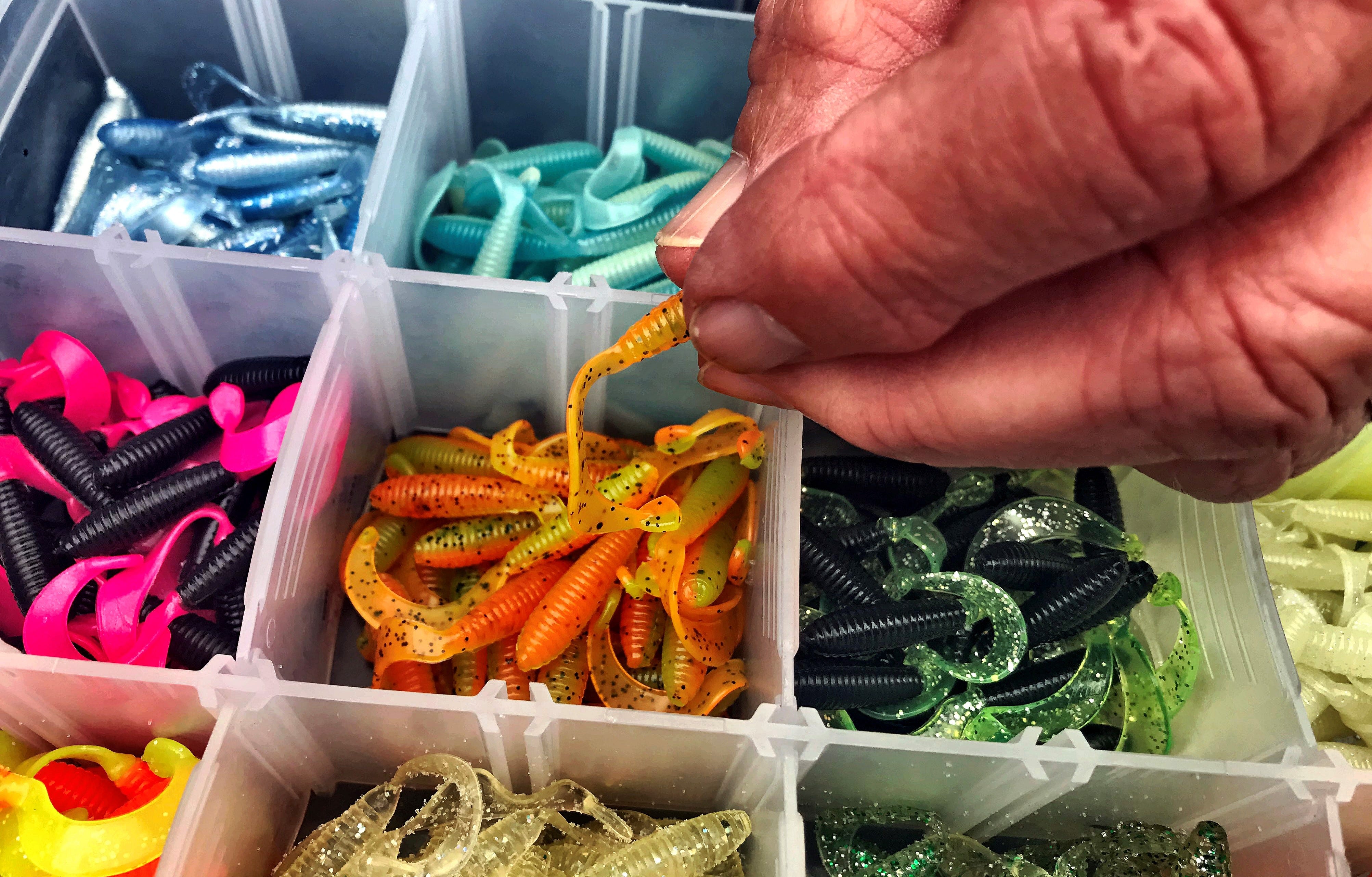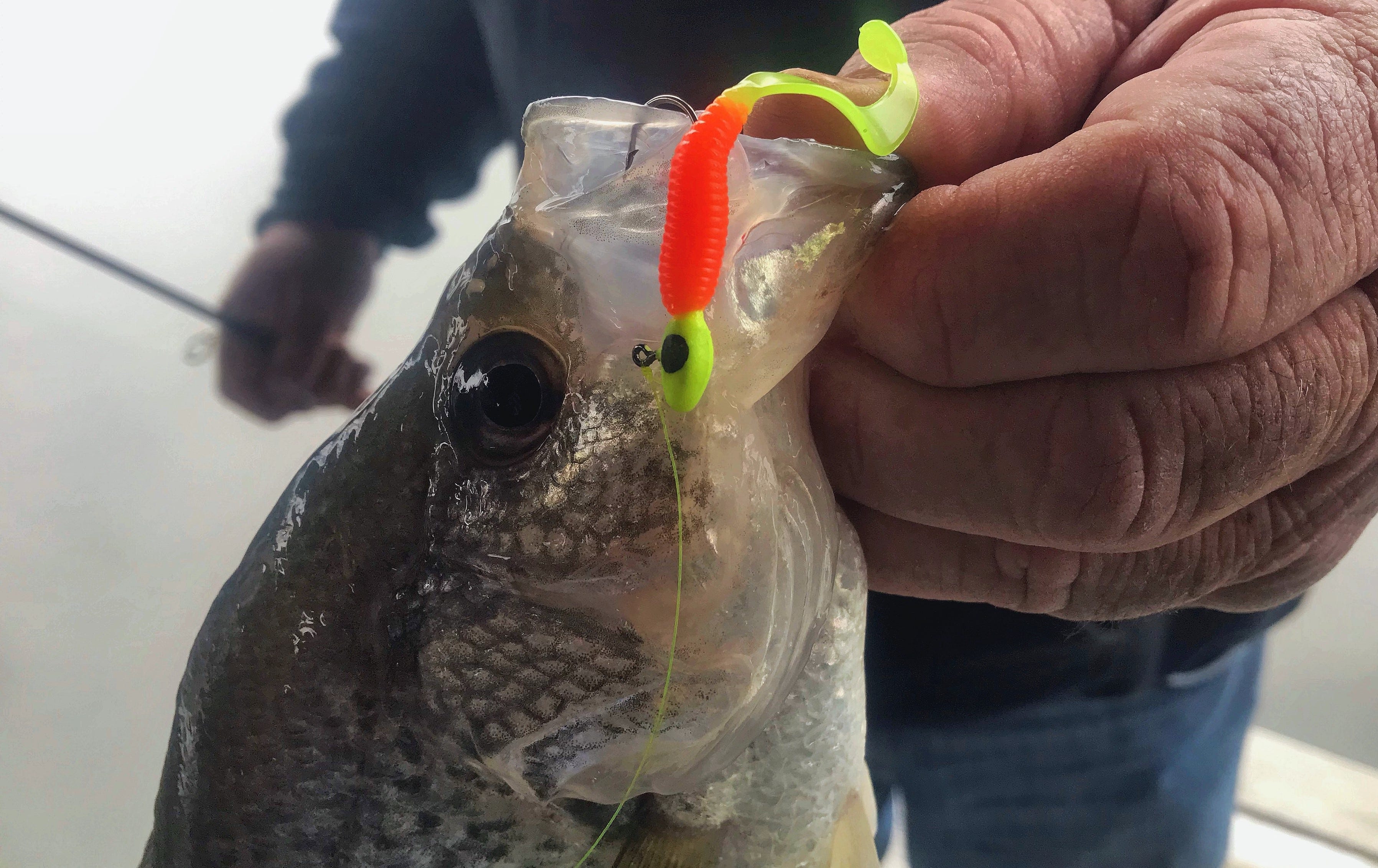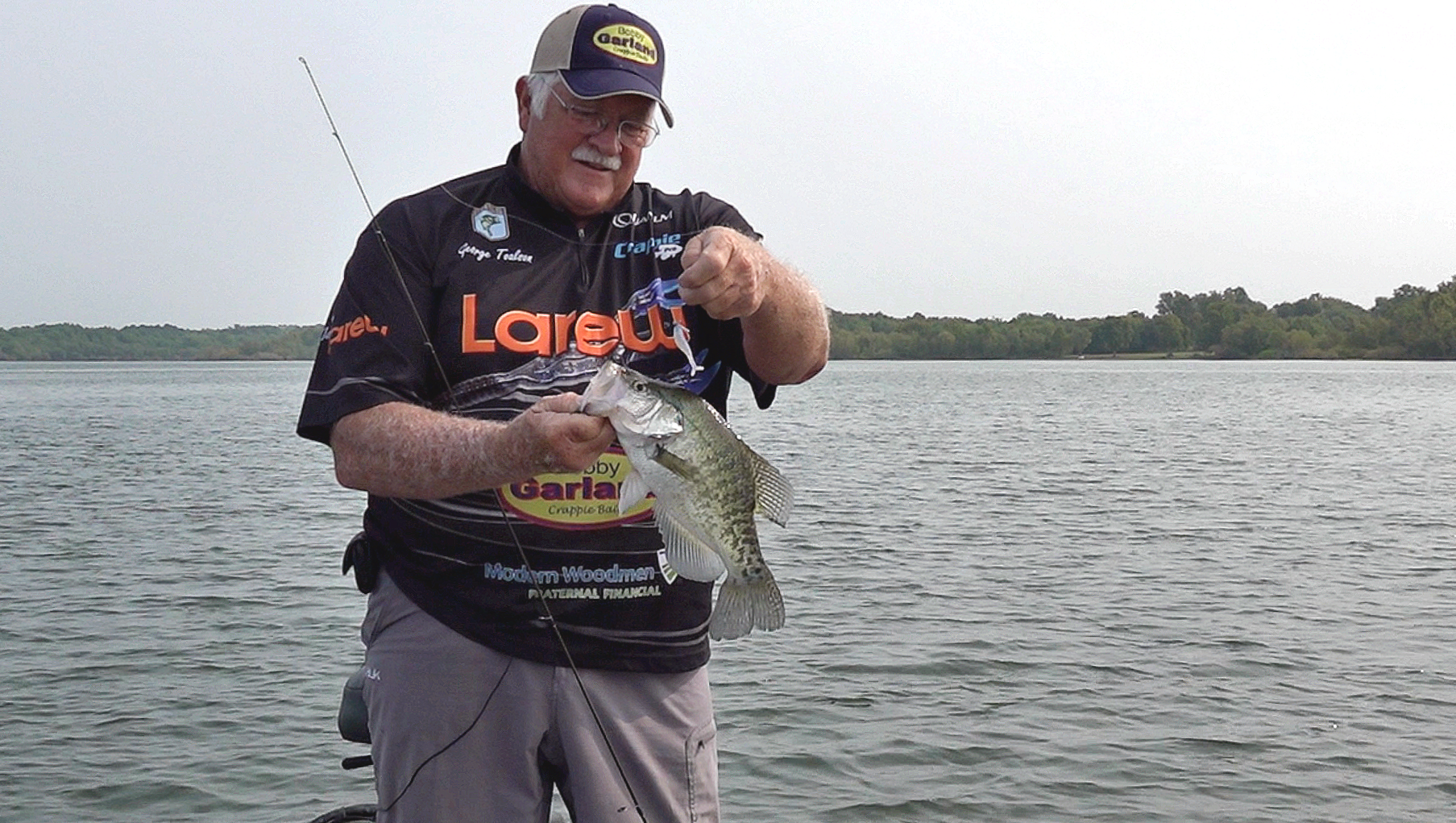- Aug 17, 2022
Swimming Bait Tactics & Tricks for Summer Crappie
Summer crappie fishing often calls for moving baits, both to find the fish and to trigger strikes. Learn trolling and casting techniques of several expert anglers.
Crappie and baitfish are more active when water temperatures are high during the heat of summer, meaning both move a lot. Savvy anglers approach summer crappie fishing by mimicking the fleeing motion of baitfish, using “swimming” lures with lively tails.
“A crappie’s metabolism this time of the year is really cranking, and they are eating more now than any other time,” said North Carolina tournament angler Stokes McClellan about summer crappie fishing. “Crappie are moving more so I think they like the tail action of those lures a lot better than they do in the wintertime when it is cold. The water temperature has lot to do with it.”
Mississippi guide Brad Chappell believes a swimming bait triggers more summer crappie fishing strikes. “It draws that instinct for crappie to bite something moving away from them,” Chappell said. “The tail on those baits creates more disturbance that actually just helps crappie locate the baits and gets their attention a little bit better.”
Crappie experts Freddie Sinclair, George Toalson, McClellan and Chappell rely on Bobby Garland swimming baits for summer crappie fishing. Let’s look at their strategies.
Trolling Tactics


Chappell specializes in long lining, a method of trolling lures on long lines from the sides and back of a slow-moving boat. His favorite Bobby Garland lure for this tactic is the Stroll’R. “It is the right size for long lining, and it gives off a lot of tail action, which creates a lot of vibration,” he said. Chappell’s favorite Stroll’R colors are Grenada Gold, Horsefly, Glacier, June Bug, Pearl Chartreuse and Blue Chrome.
The Mississippi guide rigs his long lining rods with either a single Stroll’R on a 1/16-ounce jig or two Stroll’Rs with 1/16-ounce jigs set 3 1/2 to 4 feet apart, if he needs to troll deeper. He opts for 1/4-ounce jigheads when he needs to troll deeper than 15 feet.
Keying on the edges of river channels featuring brush piles and stumps, Chappell long lines his jigs at a trolling speed of 1.2 to 1.4 miles per hour.
The Stroll’R is also McClellan’s favorite swimming bait for trolling during summer. He believes the Stroll’R is especially productive in off-colored water because the lure’s vibrating tail makes it easier for crappie to track down the bait. McClellan’s favorite Stroll’R colors are dark blues and any hues with chartreuse tails, if visibility in the water is only 6 to 8 inches.
McClellan trolls with 12 rods, each rigged with a single Stroll’R, at a speed of 1.3 to 1.4 mph. He mixes depths of his setups by rigging some rods with 1/16-ounce jigs and the rest with 1/8-ounce jigs.
Retired North Carolina guide Freddie Sinclair trolls Stroll’Rs and Hyper Grubs at 1.5 to 1.7 mph to catch summertime crappie. He rigs his trolling rods with single baits on 1/16-ounce and 1/32-ounce jigs.
Casting Tricks


Forward facing live sonar has made it easier for anglers to cast and swim their lures to summertime crappie that are holding close to cover.
McClellan likes to pinpoint crappie with his Garmin Panoptix LiveScope and cast Baby Shad Swim’Rs or Hyper Grubs to the fish, which are typically holding in brush piles, laydowns or stakebeds where a creek channel intersects with the old river channel. He favors dark lures for dirty water and lighter hues of chartreuse and pearl whites if the water has visibility of 2 to 3 feet. If he is fishing 12 to 15 feet deep, McClellan opts for a 1/16-ounce jighead and switches to a 1/8-ounce jig if the fish are deeper.
McClellan favors a slow, steady retrieve for summertime crappie. “A good steady retrieve is much better than anything erratic,” he said. “They seem to back off if you try to put any more action to it.”
McClellan employs his LiveScope to surprise crappie and trigger a reaction strike. “With this LiveScope sometimes you can tell which way the fish are facing so I like to come up behind them with the jig, then just drop it right in front of them and then pick it up,” he said.
The lively Hyper Grub is Sinclair’s top pick for aggressive summertime crappie while the Baby Shad Swim’R with its more subtle tail action is his choice for less active fish. Sinclair favors the Cajun Cricket color for dingy to stained water and blue ice for casting in clear water. He notices crappie are more aggressive in the morning, so he rigs his lures on 1/16-ounce jigheads and switches to 1/24-ounce or 1/32-ounce jigs when the crappie are less active later in the day.
Brush piles along river ledges are Sinclair’s favorite targets for casting to summertime crappie. He casts his lures past the brush and employs a steady retrieve to swim his baits over the cover. If he sees fish on his LiveScope holding next to the brush on the same side as his boat, Sinclair will let his bait drop down to those fish to trigger a strike.
Tickling Retrieve


Chappell has his guide clients “tickle” their swimming baits to catch summertime crappie hanging around brush piles. He sets up his rods with a double jig rig of a Hyper Grub (matched with a 1/16- or 1/32-ounce jighead) on the top with a Itty Bit Swim’R (1/48- or 1/64-ounce jig) tied 10 to 12 inches below the Hyper Grub. His favorite colors for these lures are Blue Ice, Monkey Milk and Glacier.
The Mississippi guide instructs his clients to cast past the brush and swim the lures over the cover. “As they are retrieving it over the brush pile I want them to actually tickle it all the way through the retrieve,” he said. His clients tickle the baits by slightly twitching their rod tips about an inch to 2 inches throughout the retrieve.
Pendulum Presentation


The Slab Hunt’R, which features a double paddle tail, is the favorite swimming bait for Toalson, longtime lure designer for Bobby Garland Crappie Baits. “It is made to where if you barely move it in the water that tail is moving,” Toalson said.
The Oklahoma angler opts for Slab Hunt’Rs in Monkey Milk or Glacier because those colors best mimic a moving baitfish. “That iridescent color flashes like a shad in the water,” Toalson said. “As the lure turns the least little bit it creates that exact flash that you see from those little shad minnows.”
Toalson noted he designed the Slab Hunt’R for a 1/16-ounce jighead, and that size jig gives the bait the right amount of movement. “If you put a heavier head on the bait it makes it move faster and it tends to dominate the bait too much,” he said. When he finds a school of crappie with LiveScope, Toalson employs a pitch-and-pendulum presentation with his swimming bait. “I will pitch it out 10 to 15 feet and let it swim back to me real slow,” he said.
Letting the lure pendulum back toward the boat allows Toalson to swim his bait over the top of the crappie holding in brush piles. “Crappie are edge feeders and if you find a school of crappie you are going to catch them as that lure is swinging to them,” Toalson said. “So you need to catch them before it gets to that school or right over the top of it, because if the lure gets into the middle of the school you very rarely get a bite.”
Pay Attention to Shad Size


Shad spawns in late spring and throughout the summer offer a variety of size prey for crappie during summertime. The crappie experts pay attention to the size of shad and amount of baitfish present when they target summertime crappie.
- Brad Chappell tries to avoid fishing his swimming baits in areas with an overabundance of shad. “I like to find areas that aren’t holding a ton of shad because it is almost like us going to a buffet and someone offering us a snack whenever we have a buffet sitting in front of us,” he said. “We are going to go to the buffet then.”
- During early summer when postspawn crappie are feeding heavily, Chappell will tempt those fish with larger lures, but he scales down to smaller profile baits such as the Itty Bit Swim’R during late summer to match the size of shad fry.
- George Toalson notices bigger shad are more abundant during mid-summer, so he suggests trying 3-inch lures for crappie then. In August and September Toalson prefers the Itty Bit Slab Hunt’R and Itty Bit Swim’R to match the tiny size of shad hatched during the summer.
- Monkey Milk and Glacier are the two lure colors Toalson favors for matching the iridescent flash of shad. If crappie ignore his offering, Toalson dyes the tip of the lure’s tail chartreuse, which he notes accentuates the movement of the lure’s tail to draw more strikes. “That little bit (of chartreuse) can make a huge difference,” he said.



